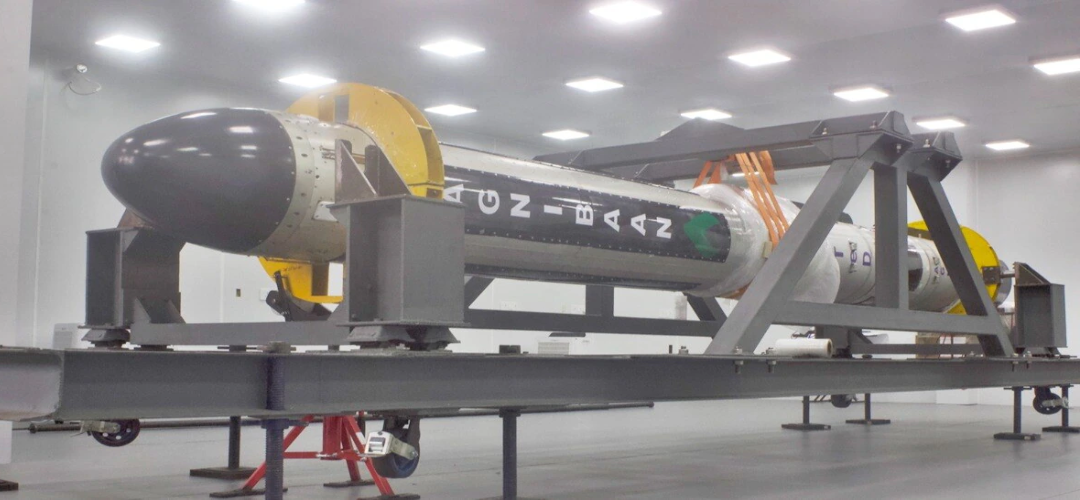Launching India’s Space Aspirations into a New Orbit with the first ever private sector launch.
India’s burgeoning private space sector reached a significant milestone with the successful launch of the Agnibaan SOrTeD rocket by Agnikul Cosmos, a Chennai-based startup incubated by the prestigious Indian Institute of Technology, Madras (IIT-M). This event, which took place at the Satish Dhawan Space Centre in Sriharikota, marks the country’s second privately built rocket launch and demonstrates India’s young engineers’ innovative spirit and perseverance.
Background
Agnikul Cosmos was founded in 2017 by two visionary aerospace engineers with the dream of democratizing access to space. Their mission is to develop fully customizable, transportable launch vehicles specifically designed for small satellites. By leveraging cutting-edge technology, they aim to reduce costs and increase accessibility for global space missions.
From the outset, Agnikul Cosmos faced significant challenges, including securing funding and developing new technologies. However, their determination and support from key institutions like IIT-Madras enabled them to overcome these obstacles. The successful launch of Agnibaan SOrTeD is a testament to their resilience and innovative capabilities.
This launch is notable for several reasons, primarily because it features the world’s first single-piece 3D-printed semi-cryogenic engine. The use of 3D printing technology in manufacturing the engine not only lowers the launch cost but also significantly cuts down the time required to assemble the vehicle.
The Agnibaan SOrTeD, being a suborbital technological demonstrator, is designed to gather crucial flight data and ensure the optimal functioning of systems for the startup’s future orbital launch vehicle, Agnibaan. The successful flight data collection is a crucial step towards their goal of launching an orbital mission by the end of the 2025 fiscal year.

Analysis
Historically, the Indian Space Research Organisation (ISRO) has not successfully flown a semi-cryogenic engine using a mix of liquid and gas propellant. This achievement by a private startup showcases India’s growing capabilities in advanced space technology and sets a new benchmark for innovation in the sector.
Furthermore, Agnikul Cosmos’ success highlights the increasing role of private companies in India’s space endeavours. This aligns with the government’s push for the privatization and commercialization of the space sector. The rise of private entities like Agnikul Cosmos and Skyroot Aerospace, which launched India’s first private rocket, Vikram-S, in 2022, marks a shift towards a more collaborative and competitive space industry in the country.
The economic implications of this successful launch are profound. By reducing the cost and time associated with rocket manufacturing, Agnikul Cosmos is making space more accessible and affordable. This democratization of space access can lead to a surge in satellite launches, boosting industries reliant on satellite technology, such as telecommunications, weather forecasting, and earth observation.
Technologically, the successful implementation of 3D printing in manufacturing rocket engines sets a precedent for future advancements. This innovation could lead to more efficient production processes and inspire other companies to adopt similar techniques, further driving down costs and accelerating the development of space technologies.
On the global stage, Agnikul Cosmos’ achievement positions India as a significant player in the international space industry. The successful launch demonstrates the country’s ability to innovate and compete with established spacefaring nations.
Moreover, the success of startups like Agnikul Cosmos sends a strong message to the global space community about the potential of emerging markets. It highlights how countries with burgeoning space programmes can significantly contribute to the industry, fostering a more diverse and inclusive global space ecosystem.
This achievement underscores India’s emergence as a formidable space exploration player capable of competing with established spacefaring nations like the United States, Russia, and China. The technological prowess demonstrated through the successful launch, particularly the world’s first single-piece 3D-printed semi-cryogenic engine, illustrates India’s innovative potential and capacity to lead in advanced space technologies.
This accomplishment opens doors for a multitude of international collaborations and commercial partnerships. Countries and companies increasingly seek cost-effective and reliable launch services to deploy satellites and other space assets. Agnikul Cosmos’ ability to provide such services positions India as a go-to destination for affordable and efficient space launches. This could lead to a surge in international contracts, joint ventures, and technology exchanges, further integrating India into the global space economy.
Moreover, the success of Agnikul Cosmos sends a powerful message about the potential of emerging markets in the space sector. It challenges the traditional dominance of a few established nations and showcases how countries with burgeoning space programs can contribute significantly to the industry. This shift promotes a more diverse and inclusive global space ecosystem where innovation and progress are not confined to a handful of countries.
Assessment
- The rise of private startups like Agnikul Cosmos exemplifies how emerging markets can leverage their unique strengths, such as lower costs and a growing pool of talented engineers, to achieve remarkable feats.
- The successful launch of Agnibaan SOrTeD showcases the country’s growing capabilities in advanced space technology, highlights the importance of private sector participation, and sets a new benchmark for innovation.
- As Agnikul Cosmos looks towards future missions, its achievements will likely inspire further advancements and foster a more inclusive and competitive global space industry. This remarkable event not only makes the nation proud but also signifies a promising




